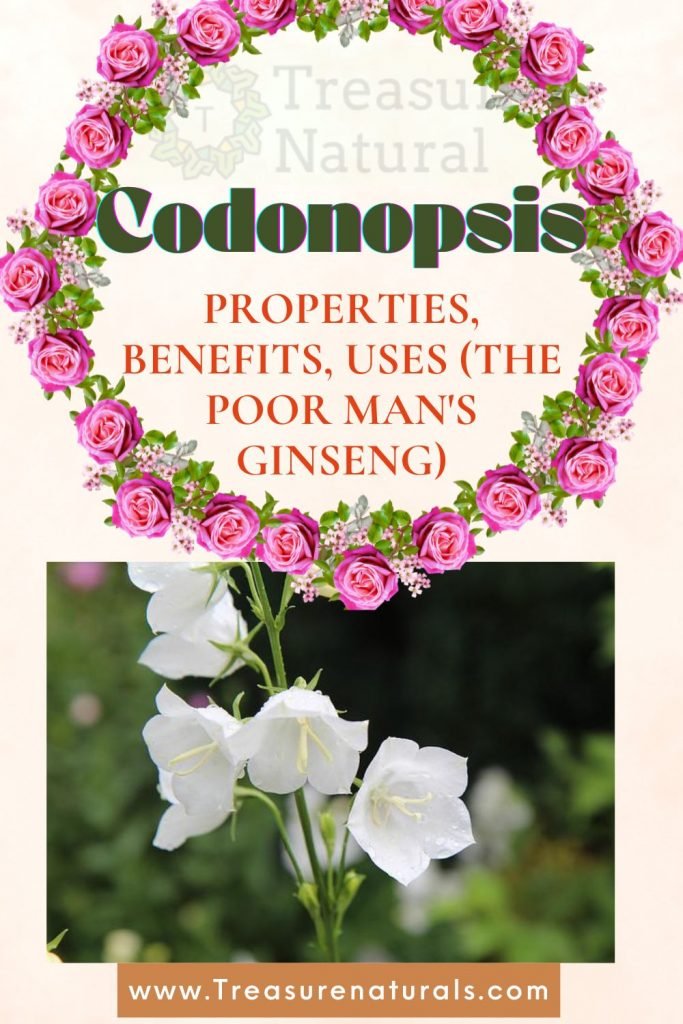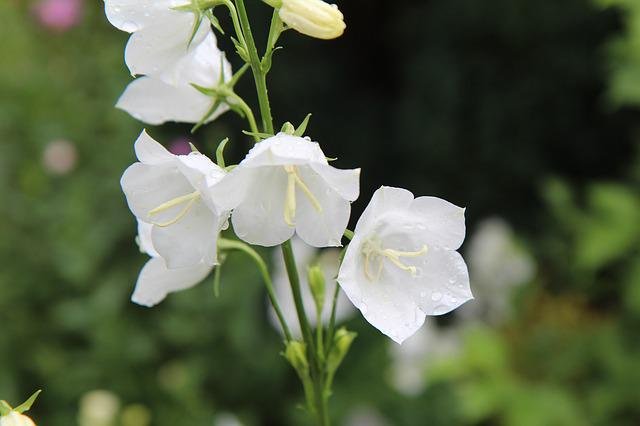
We are talking about Codonopsis, a plant that comes from Asia and which is mainly known for its virtues. Since ancient times, traditional Chinese medicine has used this root as an effective energizer. It is no coincidence that the plant is also commonly known as poor man’s ginseng, but its immunostimulating action is also similar to mushrooms such as Cordyceps and Reishi.
Let’s find out more about it together.
Codonopsis plant
Codonopsis pilosula is a small climber native to Asia. Belonging to the Campanulaceae family, it has a name that means ‘with the appearance of a bell’ and refers precisely to its pretty flowers very similar to green bells, streaked with yellow and purple.
Small and delicate, these little flowers almost merge with the leaves which instead have a heart shape and are covered with a thin down.
While never exceeding 2 m in height, it is a perennial plant capable of adapting to different environmental conditions and above all of withstanding even rather rigid temperatures.
The varieties of Codonopsis
About 40 varieties belong to the genus. The best known are:
- Codonopsis clemateidea is the best known species, especially among enthusiasts. However, it is difficult to find in nurseries. It is a herbaceous plant with an erect and broad habit with slender branches and oval leaves that are soft to the touch.
- Codonopsis lanceolata, similar to the clemateidea in posture, but taller (about 150 cm against 60) and with greenish flowers on the outside and reddish-brown tending to purple on the inside.
- Codonopsis ovata
- Codonopsis pilosula, the dried root of which is used as a stimulant
- Codonopsis mollis
- Codonopsis convolvulacea
- Codonopsis rotundifolia
The cultivation of Codonopsis
It is a plant that adapts to live and grow even in the most disparate conditions.
Since some varieties are native to the Himalayan mountainous areas, they do not fear the cold and, on the contrary, can bear very rigid temperatures (20 ° below zero and even beyond).
However, if you want to cultivate it, it is good to know that it loves fertile and loamy soils, and that it prefers areas in partial shade.
In spring it may be useful to administer slow release organic fertilizer. Irrigate abundantly in the summer and in periods of particular drought.
The roots of the Codonopsis
More than an ornamental plant, it is best known for the uses of traditional Chinese medicine and in herbal medicine.
And it is its root, which generally has a cylindrical and tapered shape, that is used as a remedy for states of fatigue. It is also nicknamed the ‘poor man’s ginseng’ and is frequently used in place of ginseng.
The roots are harvested in autumn from spontaneous plants, or in any case from plants of at least 3 or 4 years old if cultivated.
Then they are washed and then tied with a string in an orderly manner and left to dry in the sun partially.
During the drying process, the roots are manually wrinkled or treated between two boards to hold the internal tissues together.
Codonopsis, properties
In Chinese medicine, it is nicknamed ‘little Ginseng’, as it is an energizing tonic that can relieve that sense of profound exhaustion. But, unlike ginseng, codonopsis has a sweeter and longer-lasting action.
In phytotherapy this plant is mainly recommended when fatigue and lack of energy weaken the functionality of the stomach, thus causing excessive acidity and a sense of heaviness. This remedy harmonizes gastric activity and balances digestion.
It is also good to know that its tonic action extends to the lung which, according to Chinese medicine, in addition to being the organ in charge of breathing, is also linked to the defense of the whole organism.
From this it follows that it constitutes a remedy for cases in which fatigue is also accompanied by shallow breathing, shortness of breath, chronic cough and particular sensitivity to infections.
Modern Medicine and Codonopsis
Modern scientific research has done nothing but confirm what was already established by the ancient oriental discipline.
Modern medicine has in fact counted it among the major adaptogens, or those remedies that improve resistance to stress and counteract possible psycho-physical discomfort.
In particular, this root would seem useful when fatigue and weakness cause gastrointestinal disturbances, such as digestive difficulties associated with heartburn, hyperacidity and lack of appetite.
Furthermore, scientific studies have confirmed that it would improve the efficiency of the immune system, thus reducing the risk of possible diseases that would further weaken an already tried subject.
Finally, recent studies have also confirmed the fact that the tonic effect of the plant also reverberates on the intellectual level, with an improvement in mental functions.
In view of this, it is generally used as a substitute for ginseng precisely due to its similar properties which, in summary, are:
- Central nervous system stimulant
- Increase stamina
- Adaptogen both physically and mentally
- Anti-inflammatory
- Immunomodulating
- Anti-asthenic
Codonopsis: method of use
Generally, it is administered in the form of dry extract in tablets and, as a rule, the doses indicated on the packaging recommend taking 2-3 tablets per day, 5-10 minutes before main meals.
However, we invite you to consult a doctor experienced in phytotherapy or acupuncture in order to evaluate your personal situation.
In fact, only in the correct doctor-patient relationship is it possible to face a cure and, above all, to manage it in the best possible way for the specific case.
Where to buy Codonopsis
The dry extract is found in herbal medicine in the form of dry root and in Chinese product stores, in pharmacies in tablets as a supplement, but also online, where different brands and formats are available. For plants, contact the nurseries specializing in rare plants and online you will find the seeds to grow it yourself.
Price of Codonopsis
Pricing varies based on package size and brand. As a guideline, a pack containing 60 tablets costs around 21 USD.
Codonopsis, contraindications

In general, herbal remedies can have interactions with chemical drugs.
In addition to consulting your doctor, maximum precaution is recommended before taking it, especially in patients receiving aspirin, anticoagulants (such as warfarin and heparin), antiplatelet agents and non-steroidal anti-inflammatory drugs (such as ibuprofen and naproxen).
Caution also in concomitant use with laxative remedies or antacid or antireflux products.
Finally, it is good to know that intestinal peristalsis slows down.
Do not take during pregnancy and lactation due to lack of adequate studies. Also not recommended during fertility treatments. It is also not recommended for use in children, again due to a lack of studies in this regard.






